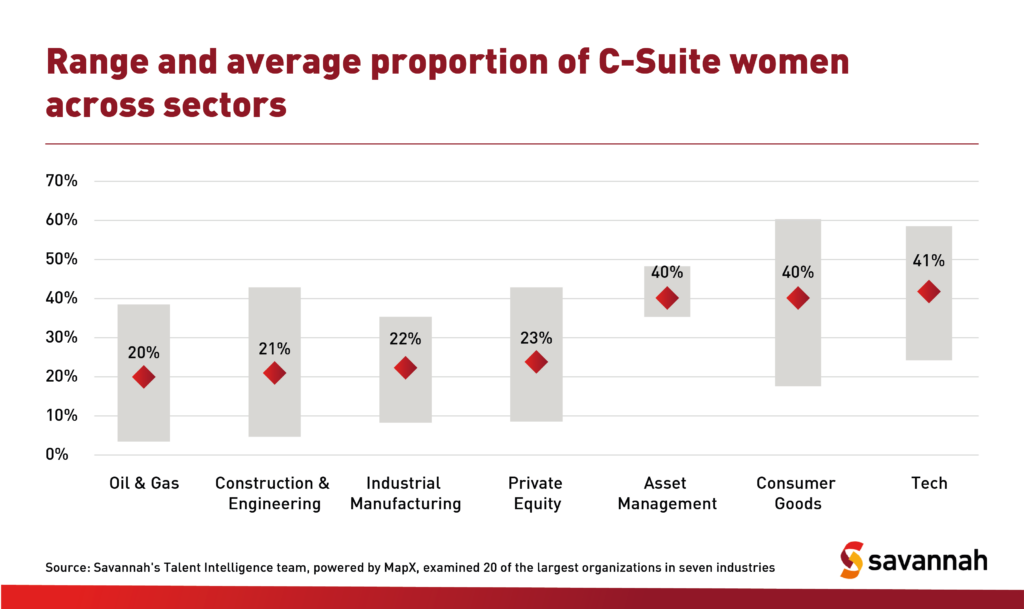The 30% Club recently reported that there are more women on FTSE ExCos (30%) and non-executive boards (42%). While these numbers represent significant progress compared to 2010 when just 12.5% of the members of corporate boards were female, there is still a marked absence of women in the top positions of UK companies. Some organisations are struggling to drive sustainable progress in relation to gender diversity at senior levels. Savannah’s Talent Intelligence team set about taking a closer look at the data.
New chief executive hires are nearly all men
Using Savannah’s proprietary leadership identification and analytics platform MapX we looked at a sample of 222 Chief Executive (CEO) appointments from March 2023 (CEOs of listed and private businesses in the EU and US with over 1bn revenue who started their role since 1st March 2023). Just 10% of the successful candidates are women. Of these, almost all had prior CEO, Chief Operating Officer or other general management experience. One of the 22 was previously a Chief Financial Officer.
Technology companies have twice as many women leaders as oil & gas
On average, the greatest gender diversity at senior levels is seen in technology, asset management and consumer goods, with these sectors having double the number of women than oil & gas, industrial manufacturing and construction & engineering.
It’s about the company not the sector
We analysed C-Suite leadership in the largest organisations in each of the following industry sectors: asset management, private equity, oil & gas, construction & engineering, industrial manufacturing, consumer goods and technology. We looked at the average gender diversity and the range from ‘best’ to ‘worst’ of the companies in our sample.

In most of the sectors analysed, there is a big range between the most and least gender diverse leadership teams. For example, the most diverse consumer goods company we analysed has 60% women at C-Suite level compared to the least which has 17% women. In construction & engineering the most gender diverse has 42% women leaders, compared to the least at just 4%. In asset management we see much less variation in the companies analysed.
Bain Capital, Goldman Sachs, Cepsa, Equnior, BP, Diageo, Lego, 3M and Unilever are a few examples of organisations near the top of their respective industries in terms of gender diversity at senior levels.
Executive Search CEOs are also predominently male
Finally, we shone a light on our own profession: executive search. We examined the gender split of those leading the 50 largest executive search firms (ref: Hunt Scanlon Top 50 Recruiters list). Just eight have female CEOs. Could lack of diversity in our industry be a contributing factor to slow progress in relation to gender parity in leadership positions?
2024 must be a year of continued action
The evidence is growing stronger every year: diversity of thought brings innovation, better problem solving and better commercial performance.
The variance between organisations – even those operating in the same sector – is huge. With the right focus, data and support, every organisation can enjoy the sustained benefits of a diverse team.




